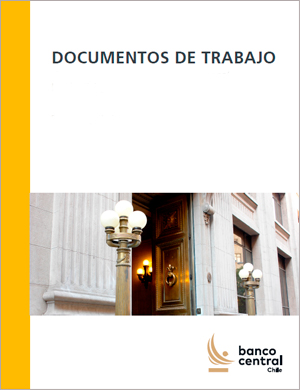Working Papers N° 911: The Credit Channel Through the Lens of a Semi- Structural Model
Publications
Working Papers N° 911: The Credit Channel Through the Lens of a Semi- Structural Model
Autor: Francisco Arroyo Marioli , Juan Sebastian Becerra , Matías Solorza
Description
In this paper, we estimate a semi-structural model with a banking sector for the Chilean economy. Our innovation consists of incorporating a system of equations that reflects the dynamics of credit, interest rate spreads and loan-loss provisions to the Central Bank of Chile’s semi-structural model “MSEP”. We estimate the model and analyze the macroeconomic effects of incorporating this sector. We find that the banking sector plays a role in accelerating the business cycle through lower spreads and procyclical credit supply, in contrast to the counter-cyclical role it has had in COVID-19 crisis. Additionally, we decompose the effects of this sector’s variables in the historical business cycle. We find that credit growth can explain on average about 0.3 pp of total output gap variation. Moreover, we find that in episodes of severe stress, this role can grow to 1.9 pp, as has been the case of the COVID-19 pandemic. This last fact is important, given that in many cases, monetary policy is faced with the challenge of implementing non-conventional measures, many of them through the commercial banking sector. We find that this specification allows the model to better quantify the impact of measures that have favored the flow of credit specially in periods of stress.
Working Papers N° 911: The Credit Channel Through the Lens of a Semi- Structural Model
Boxes and graphics

